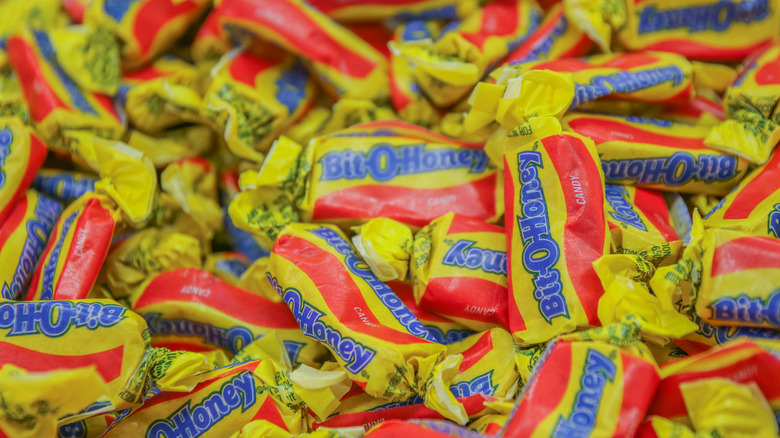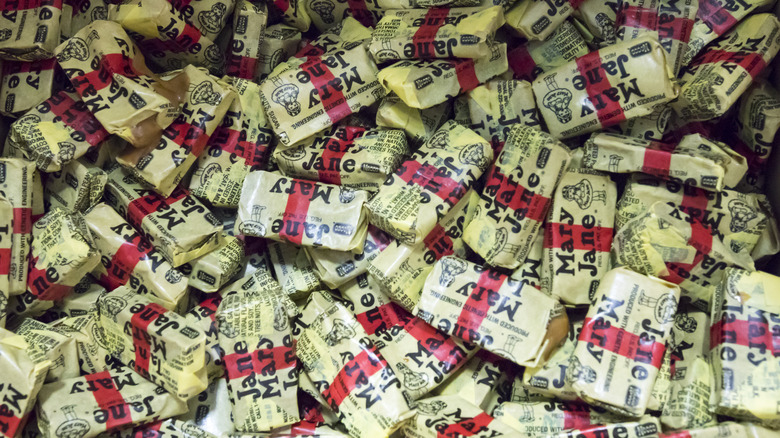How Bit-O-Honey Is Different From Mary Jane
When you were a kid and went out trick-or-treating with your friends, chances are you tried to hit up the houses that you knew for sure had the best candy. We're talking king-sized candy bars, Blow Pops, and maybe even some money if you were lucky. But during the night, maybe one of your friends noticed that they got something called a "Bit-O-Honey" in their bucket, and reacted with disgust that someone would be so cruel as to feed "old people candy" to kids. Just what is a Bit-O-Honey and what gives it such a stereotype?
As Old Time Candy explains, the Bit-O-Honey was invented in Chicago sometime in 1924 by the Schutter-Johnson Company. The candy is essentially a cross between sticky taffy and a candy bar, wrapped in wax paper and cut into six slices. The Bit-O-Honey has had little change over the years, aside from getting a smiling bee mascot sometime in the 1970s and occasionally changing owners from time to time (via Candy Blog). It's one of those candies that came around during the first two decades of the 20th century and is still kicking around today.
"But wait a minute," you might say, "I think I've seen something like this before. Aren't they called Mary Janes?" In a sense, you're technically right. Mary Janes, those little rectangular pieces of candy, do look similar to a bag of Bit-O-Honeys at first glance. But these old-time candies aren't exactly the same, despite their very old status in the history of American candy.
Bit-O-Honey and Mary Janes have different ingredients
While Mary Janes and Bit-O-Honeys seem similar, considering both are taffy-like confections in wax paper, the key difference between them is their ingredients. According to Mental Floss, unlike Bit-O-Honeys which are made with a combination of almonds and honey, Mary Jane candies are produced with a combination of peanut butter and molasses that creates a trademark sticky, sweet, and salty combination.
Mary Jane candies are also older than Bit-O-Honeys. According to Culinary Lore, these molasses-flavored candies came about way back in 1914 in Boston, as a product of the Charles. N. Miller Candy Company. Candy Warehouse, however, puts the invention of the candies even farther back in 1884. What remains true is that Mary Janes predate Bit-O-Honey candies by a decade or more.
Another common factor between the average Bit-O-Honey and Mary Jane is that they seem to have developed a stereotype of being "gross old people candy." One city in North Carolina jokingly "banned" Mary Jane peanut butter candies from being given out on Halloween on the grounds that "no one likes them" (via Insider) while Crimson Crier News advised trick-or-treaters to search for Bit-O-Honeys in their pails, calling the candies "little devils of disgusting mess."
While this certainly isn't to say that Mary Janes and Bit-O-Honeys don't have fans (After all, how else would they have stayed in circulation for so long?), it seems that some people would prefer to keep both of these treats away from their Halloween candy haul.

